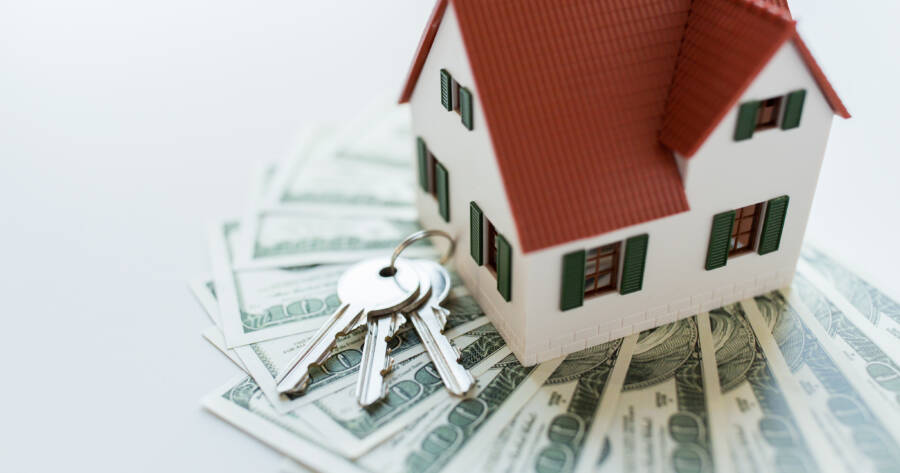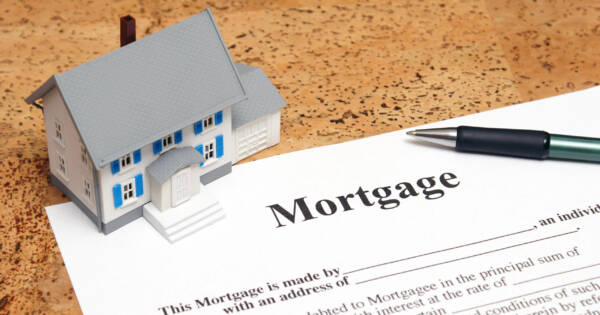There are plenty of good reasons to consider refinancing your mortgage. However, the closing costs associated with a mortgage refinance often put people off. Fortunately, some banks and financial institutions now offer “No-Closing-Cost Refinance” mortgages.
What Is a No-Closing-Cost Refinance?
It’s not a trick question. A no-closing-cost mortgage refinance is simply where you refinance your mortgage without paying the closing costs up front. However, that doesn’t mean the costs don’t exist. Your mortgage lender isn’t just going to pony up and pay them for you. Instead, the costs either get rolled into the principal of the mortgage itself, or exchanged for a slightly higher interest rate.
For example, let’s say you want to remortgage your house for $250,000. Depending on lender requirements, the average closing costs on that deal would probably run between $2,500 and $6,000. Instead of paying those costs in a lump sum, all at once, you actually end up with a mortgage for, say, $255,000. The closing costs are included in the total amount.
Average Closing Costs when Refinancing a Mortgage
You probably remember paying a bunch of closing costs when you first bought your house. Unfortunately, a mortgage refinance requires a lot of the same costs. You should budget roughly 2-to-6% of your current mortgage balance as closing costs in order to refinance. Your lender may need a brand new house appraisal and/or building inspection. You’ll be paying for those things too.
There are also legal fees included in closing costs. There is the:
- Loan origination fee for roughly 0.5-to-1% of the mortgage amount;
- Title fees;
- VA Funding Fees if applicable, and;
- Mortgage insurance, which is required on most mortgages unless you have 20% down payment on the purchase price of the house.
You may even need to pay smaller credit report fees. Lenders will need copies of your credit report to ensure your creditworthiness. Yes, even though you already have a mortgage, you need to prove you’re worthy of a new one.
Other Costs Associated with the No-Closing-Cost Refinance
Whether you opt for your closing costs to be lumped into the principle amount or a higher interest rate, it’s the same end result. Your mortgage payments are going to be higher than if you just paid the closing costs up front. Let’s look at both examples.
Increased Mortgage Rate
Let’s stick with the mortgage amount of $250,000 we used earlier. You can get a 2.9% interest rate if you pay the closing costs up front. That puts your monthly payment at $1,997.79, excluding property tax and mortgage insurance. However, you can opt for a no-closing-cost mortgage in exchange for a higher interest rate.
So you save yourself about $5,000 up front. But now your interest rate is 3.75%. You monthly payment jumps to $2,101.39. Sure, it’s only $100 a month extra. But your mortgage is for 15 years — that’s 180 months. That extra $100 would have covered the entire closing costs in just 50 months.
Higher Loan Balance
Choosing to have your closing costs tacked onto the total loan amount is another way to avoid closing costs. However, this will also cost you extra in the long run. Let’s look at our running example one more time.
Your $250,000 mortgage, at 2.9% over 15 years, costs you $1,997.79 per month. After 15 years, you’ll have paid a total of $359,602.20. Now, let’s say you get the exact same terms, except you add the $5,000 in closing costs to the loan amount. Your monthly payment jumps to $2,032.08. After 15 years, your payments will total $365,774.40. Your closing costs now cost you over $6,100 instead of the original $5,000.
When Does a Home Refinance with No Closing Costs Make Sense?
No matter how you slice it, no-closing-costs mortgage refinances will almost always cost you more money in the long run. So why does anyone use these mortgage products at all? Well, there are a couple scenarios where it might make sense to consider one.
If you’re planning to stay in a house for less than five years, you probably couldn’t recoup the upfront fees in refinance savings before you move again. Or if you can qualify for a mortgage but don’t have an extra bundle of cash for closing costs, a no-closing-cost refinance might be your only option.
There are some extra situations to consider. If you have a financial emergency and need access to cash, getting some equity from your home might be your only option. Assuming money is tight — it’s an emergency, remember? — you probably don’t have the closing costs on hand. You’ll pay extra for it, but a no-closing-cost refinance could help you out of a tight situation.
The final scenario to consider is if your original mortgage is a particularly high interest rate. Let’s say you closed your first mortgage 5-to-10 years ago, at a higher interest rate because your credit score wasn’t great. Now you’re in a much better financial spot, and would qualify for a much lower interest rate. For instance, maybe 2.9% instead of 4.9%. Your overall interest savings — both monthly, and over the lifespan of the mortgage — would more than cover the closing costs, even if you rolled them into the principle amount.
The Bottom Line
While a no-closing-cost refinance will cost you more money in the long run, it remains a good choice in certain situations. It all depends on your home value, current mortgage balance, credit score, and personal financial situation. As a rule of thumb, though, it’s usually better to pay the closing costs up front when the deal is signed.
For some people, coming up with approximately $5,000 in cash for a mortgage refinance just isn’t an option. If you’ve been hesitant to refinance your mortgage because of high closing costs, call around to your local banks and mortgage lenders. Some of them may offer no-closing-costs refinances, although not every lender does.
 Tinnakorn jorruang / Shutterstock
Tinnakorn jorruang / Shutterstock







